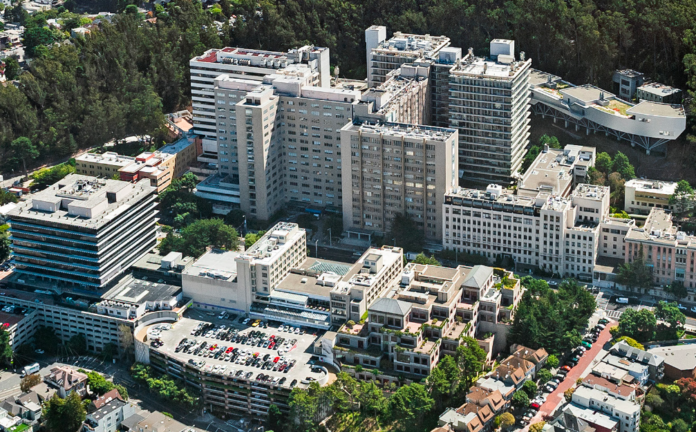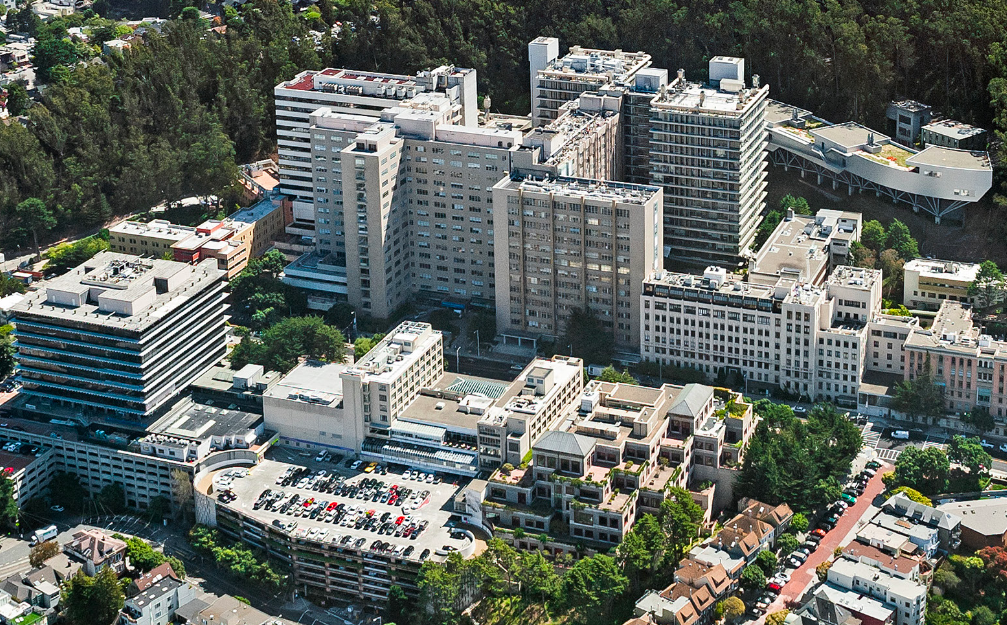
“Uh-oh — the cat’s out of the bag now.”
That’s what a consultant was heard to say at the final meeting of the Community Working Group on the Parnassus Heights Re-Envisioning Process when it was accidentally revealed that UCSF is planning to add 1.5 million square feet to its Parnassus Height campus.
Despite claims to the contrary, the community has been left completely in the dark and the university has made all decisions on this behind closed doors, in violation of commitments made by the Board of Regents to carefully consult with neighbors and make efforts to reduce impacts before deciding upon major planning decisions.

Since 1976, the Parnassus Campus has had a space ceiling at 3.55 million square feet. The regents adopted that limit to settle a lawsuit brought by its neighbors. Since its adoption, the regents have repeatedly recommitted to the ceiling, most recently in the 2014 Long Range Development Plan, which is still in effect. With regard to the Space Ceiling Issue the plan provides:
“Under the LRDP, Parnassus Heights is to remain UCSF’s home for classroom instruction, the four schools, adult inpatient facilities, a variety of outpatient clinics, research, housing and support. However, as called for in the 1976 Regents Resolution and the 1996 LRDP, the decompressionof space at Parnassus Heights is proposed to continue through the periodic demolition of buildings and the relocation to other sites of programs that are not essential to this campus site….”
The Inner Sunset and Haight communities have relied on that commitment as a protection against the university’s voracious demand for space. Now that is being ignored.
UCSF released its Comprehensive Parnassus Heights Plan Oct. 7. The plan states that the school intends to add another 1.5 million square feet of new office, medical, and research space, bringing its total footprint to more than 5 million square feet. The university has announced that it will proceed with the preparation of an environmental impact report for the plan this fall.
The key impact on the city, especially on the Inner Sunset and Haight-Ashbury neighborhoods, is the dramatic demand the expansion would create for additional affordable housing. Neighborhood residents were so concerned about that impact that the 1976 space limit specifically exempted housing from counting against the cap. Still, UCSF has refused to build a significant number of housing units on the campus for its students, faculty, and staff
Help us save local journalism!
Every tax-deductible donation helps us grow to cover the issues that mean the most to our community. Become a 48 Hills Hero and support the only daily progressive news source in the Bay Area.
UCSF has been a major contributor to the affordable housing crisis and will only exacerbate the crisis if it carries out its expansion plans.
In May of this year, the city released a study by Keyser Marston Associates analyzing the relationship between job growth and housing demand. Based on that study 1.5 million square feet of combined office, medical and research space will generate a demand for 2,850 housing units, 970 of which would need to be affordable.
That number includes 87 units of extremely-low-income, 102 very-low income, 278 of low-income and 500 units of moderate-income housing. When that’s combined with the deficit in affordable housing created by roughly 3 million square feet in UCSF’s new Mission Bay campus, the effect on housing demand is tripled.
Based upon that same study, the Mission Bay campus has generated a demand for about 5,700 units of housing, of which 1,942 should be below market rate.
As a state agency UCSF, is exempt from development fees, including fees for affordable housing, which must be paid by private developers. It’s also exempt from property taxes, including taxes to pay for affordable housing bonds.
It’s time for UCSF to take responsibility for its contribution to the affordable housing crisis. The university points to its intention to add 1,000 units of housing to the campus. But that housing does virtually nothing to respond to the need for the affordable housing component of the demand. None of that housing is intended for its staff with low or moderate incomes. Moreover, the bulk of those units are planned for a vague, distant future – after the new office and medical space is built.
UCSF is also exempt from fees and taxes for public transportation. The university is dependent upon public transportation for a large portion of its needs. Public transit in the area of the Parnassus Heights campus is over-burdened and over capacity. This has required extraordinary measures to add shuttles during high demand periods. Yet the university makes no financial contributions to system.
UCSF needs to slow down the planning process and factor in its impacts in deciding whether to expand at Parnassus — or least reconsider the amount of expansion it’s proposing. That would require full disclosure of its plans and an honest, robust, and engaged public process.
Because of seismic safety issues, state law requires UCSF to replace Long Hospital by 2030. Given the time frame, it’s perfectly justified to proceed for planning and replacement of that facility without delay. But given the impacts on affordable housing, the remainder of the planning process should be delayed while the community is informed about the impacts from the expansion and given a genuine opportunity to seek changes.
Dennis Antenore is a former San Francisco planning commissioner and a founding member of the Community Advisory Group to UCSF, and has been an active participant in that group since 1991.
